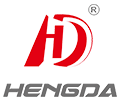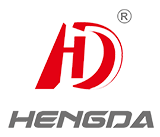What are the common surface treatments?
Release time:
2023-07-20 14:55
Source:
The appearance of the workpiece is inseparable from the design, color, material and process, of which the surface treatment process is the most direct reflection of the appearance of the product. Surface treatment can improve the appearance, texture, function and other aspects of product performance.
The commonly used surface treatment methods in the manufacturing and processing industry are: electroplating, painting, screen printing, surface drawing, sandblasting, oxidation, polishing, radium carving and so on.
electroplate
Through chemical reaction, attach a layer of other metals on the surface of the material to increase the corrosion resistance of the metal, and can achieve a certain beautifying appearance, is a commonly used surface treatment, such as: galvanizing, nickel plating, etc.
spray
Spraying is the most common surface treatment, whether it is plastic or hardware. Spraying generally includes oil spraying, powder spraying, etc., the most common is oil spraying.
Sprayed coatings, commonly known as paints, are composed of resins, pigments, solvents, and other additives. Plastic spraying generally has two paints, the surface color is called the top paint, the most surface transparent layer is called the protective paint.
Baking paint
Through spraying, high-temperature baking and other methods, a layer of various colors of paint is sprayed on the surface of the material to beautify the appearance and increase the corrosion resistance of the material.
There are generally two kinds of liquid baking paint and powder baking paint, of which powder baking paint is the most common. The paint surface is non-conductive. Areas with EMC requirements are not allowed to paint (paint products generally reserve spraying margin...) .
printing
A process of printing patterns on plastic surfaces by pad printing, screen printing and transfer.
Surface drawing
The material is placed between the upper and lower rollers of the wire drawing machine, the roller is attached with a sand belt, driven by the motor, so that the material passes through the upper and lower sand belt, pulling out a trace on the surface of the material, according to the different sand belt, the thickness of the trace is not the same, the main role is to beautify the appearance. Generally, aluminum is considered to use brushed surface treatment.
sandblast
Through the wind of the sand blasting machine, the sand is hit to the surface of the workpiece, forming a layer of dense pits on the surface of the workpiece, the main function is to remove the dirt on the surface of the workpiece, increase the adhesion of the surface of the workpiece, and prepare for the subsequent surface treatment.
oxidation
The metal on the surface of the workpiece is oxidized to form a dense protective film on the surface of the workpiece to increase the corrosion resistance of the workpiece. There are generally two ways of conducting oxidation and anodizing, which is a common surface treatment method, such as the anodizing of the surface of the radiator (which can have different colors).
polishing
Polishing refers to the use of mechanical, chemical or electrochemical action to reduce the surface roughness of the workpiece to obtain a bright, flat surface processing method, is the use of polishing tools and abrasive particles or other polishing media on the surface of the workpiece modification processing.
Polishing can not improve the dimensional accuracy or geometric accuracy of the workpiece, but for the purpose of obtaining a smooth surface or mirror gloss, and sometimes to eliminate gloss (extinction).
Laser carving
Also known as laser engraving or laser marking, is a surface treatment process using optical principles. The high-intensity focused laser beam emitted by the laser is used at the focal point to oxidize the material and thus process it.
etching
Usually referred to as etching, also known as photochemical etching, refers to the removal of the protective film of the etched area through exposure platemaking and development, and contact with chemical solution during etching to achieve the effect of dissolution corrosion, forming a concave and convex or hollow forming effect.
Previous page
Related news
Host, he is the subject of CNC machine tools, including machine tool body, column, spindle, feed mechanism and other mechanical parts. It is a mechanical component used to complete various cutting processes. Numerical control device is the core of numerical control machine tool, including hardware (printed circuit board, CRT display, key box, paper tape reader, etc.) and the corresponding software, used to input the digital part program, and complete the input information storage, data transformation, interpolation operations and the realization of various control functions.
The difference between precision sheet metal processing and ordinary sheet metal processing
From the point of view of the development process, precision sheet metal is actually an advanced version of sheet metal processing, the process changes little, the biggest difference is that precision sheet metal processing precision tolerance range is reduced to below 0.2 mm, while the accuracy of ordinary sheet metal processing is generally between 0.2 and 1 mm.
What are the heat treatment methods of CNC machining
Heat treatment process generally includes heating, insulation, cooling three processes, sometimes only heating and cooling two processes. These processes are interconnected and uninterruptible. Metal heat treatment process can be roughly divided into integral heat treatment, surface heat treatment and chemical heat treatment three categories.
What are the common surface treatments?
The appearance of the workpiece is inseparable from the design, color, material and process, of which the surface treatment process is the most direct reflection of the appearance of the product. Surface treatment can improve the appearance, texture, function and other aspects of product performance.


